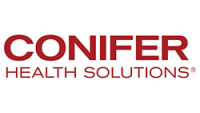The vital relationship between MDs and clinical documentation integrity
High-quality clinical documentation is vital for creating a complete picture of a patient’s health and medical history. Accurate records of diagnoses, medications, tests, treatments and other elements of a patient’s care are crucial in creating the most effective care plan leading to positive outcomes.
The quality of a physician’s clinical documentation can also impact payer reimbursement, the ability to achieve and maintain regulatory compliance and the creation of accurate quality reporting. Inaccurate documentation can lead to denials, prior authorization issues, delays in care, and payer takebacks and penalties.
In addition, documentation quality can affect patient satisfaction. The primary reasoning behind sharing clinical notes with patients is to provide greater transparency and give individuals the medical information they need to make better decisions about their healthcare. However, research shows that 20% of patients surveyed who read after-visit summaries and physician notes say they have found mistakes in those notes — 40% of which they viewed as being serious.
Clinical documentation challenges
One of the most significant documentation challenges is staying in compliance with the growing complexity of regulatory compliance and ever-changing payer requirements. While the intent is to improve patient safety, enhance outcomes, and lower costs, it requires extreme effort on the part of physicians, clinical documentation integrity specialists, and coders.
Maintaining high-quality documentation is also challenging because of its time-consuming, error-prone processes. Mistakes in documentation often result in coding errors. These, in turn, can lead to rejections and denials that cause even more work for staff, as well as delayed or inaccurate reimbursement.
MDs at the forefront of documentation quality
When we think about clinical documentation integrity initiatives, we tend to think mainly of clinical documentation integrity specialists. The primary responsibility for documentation quality will always lie with physicians. Although they understand the importance of accurately documenting a patient’s journey, it can be difficult for them to remain updated on new regulations and payer requirements. They also do a lot of their charting at home during personal time, which is not an ideal setting for accuracy.
The best way to ensure that physicians have the tools they need for optimal documentation quality is through education. The place to begin is establishing regular documentation reviews using actual examples of the physician’s documentation. Reviews should be led by the organization’s most qualified clinical documentation integrity specialists. This might be an experienced coder, a registered nurse or physician dedicated to clinical documentation integrity.
Establishing ongoing concurrent clinical documentation integrity reviews allows physicians to see how potential gaps in their charting may have impacted their patients, as well as missed revenue opportunities. This also enables physicians to identify problematic trends and track progress over time.
The clinical documentation integrity team: Facilitators of excellence
While physicians contribute a level of clinical acumen that clinical documentation integrity specialists likely do not possess, clinical documentation integrity professionals have a higher level of documentation expertise. Successful clinical documentation integrity (CDI) programs facilitate the accurate representation of a patient’s clinical status that translates into coded data. Coded data is then translated into quality reporting, physician report cards, reimbursement, public health and quality data and both the tracking and trending of disease. They’re trained to understand documentation requirements, coding guidelines, and quality reporting. The CDI specialist is the liaison between the medical staff and the coding department, as they strive to have the most accurate and complete medical record available for coding. They do this through concurrent medical record reviews, provider education and queries when the documentation is considered conflicting, incomplete, confusing, missing and/or nonspecific. As noted by the American Health Information Management Association Clinical Documentation Improvement Toolkit, “The purpose of a CDI program is to initiate concurrent and, as appropriate, retrospective reviews of inpatient health records for conflicting, incomplete, or nonspecific provider documentation.”
The most effective clinical documentation integrity teams are those that work hand and glove with coding to partner with the organization’s providers and compliance team to ensure that documentation and quality improvement activities are aligned. This also allows for quick action should an issue arise.
Technology’s role in enhancing clinical documentation integrity efforts
There are multiple ways in which technology can enhance documentation quality. For example, computer-assisted clinical documentation software automates workflows, which helps improve productivity. This technology can perform detailed chart analysis to uncover issues like missing information, which allows staff to proactively address the gap in documentation.
Through detailed analytics, clinical documentation integrity teams can pull metrics related to diagnosis-related groups (DRGs), severity of illness and risk of mortality levels, cc/mcc capture rates, case mix index, query response times and agreement rates, documentation completeness and specificity, and outcomes. These, along with revenue cycle analytics like documentation-related write-offs, in addition to patient satisfaction scores, inform and support continuous improvement activities.
Collaboration as the key to success
At its core, healthcare is about providing the highest quality care possible at every patient encounter. Being paid accurately is secondary to that effort, although still vitally important for long-term financial viability. The key to both is quality documentation, which requires seamless collaboration among both clinical and revenue cycle processes.
Working together, physicians and clinical documentation integrity specialists can partner to ensure documentation quality, reduce the likelihood of compliance-related audits and penalties, and create a pathway toward better outcomes and more timely, accurate reimbursement.






